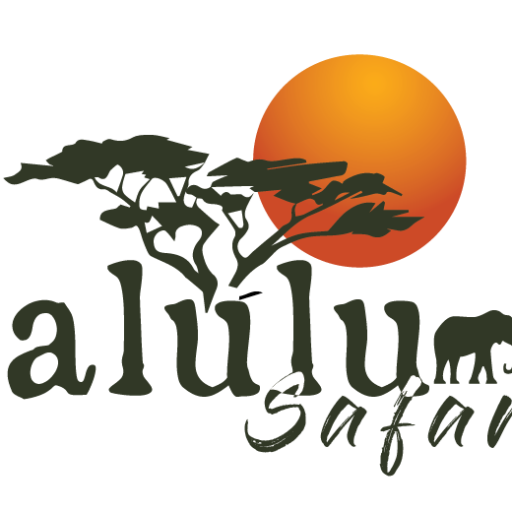Cultural Experience in Tanzania
One of Tanzania’s biggest strengths, in our opinion, is the country’s rich cultural diversity. You can learn a lot about yourself, other people, and the world as a whole if you put in the effort to get to know and appreciate those whose worldviews and beliefs are vastly different from your own. With your expanded horizons, options, and freedom of choice thanks to your newfound depth of observation and wisdom. Traveling to Africa for its animals is interesting, but getting to know the continent’s people can teach you more about who you are. This may be the most memorable and useful thing you take away from your trip in Tanzania.
Tanzania is home to more than 120 different ethnic groups that have moved there over many centuries. These groups include the pastoralist Nilotic from the Sudan, the nomadic cattle-herding Cushites from Ethiopia, the hunter-gatherer Khoisan from the Kalahari, the farmer and metalworker Bantu from West Africa, and Arabian, Indian, and Anglo immigrants. Over thousands of years, all of these groups moved, fought, or mixed with each other to make the people who live in Tanzania today. Each of these groups had different native religions, social practices, rituals, customs, art, music, and dance.
Tanzania’s tribal groups want to keep and protect their own unique identities and teach their children the values that have helped them stay together for generations. On a cultural tour of Africa, you can visit carefully restored historical sites and settlements, stay in places made to look like tribal and colonial fantasies, or work on real-world projects where ethnic skills and crafts are used in our shared, everyday world.
1. Maasai Tribe
Oral history says that the Maasai are a mix of people from North Africa and the Nilotic tribe. They came from the northern part of Kenya’s Turkana Lake, which they left in the 15th century. They then moved south and into what is now Tanzania, pushing other tribes out of the way so they could claim rich pastureland for their cattle. As a race where warriors were the most important people and their faith said that all cattle were a gift from God, they had every right to take all the cows they saw.
A million Maasai live in their home countries of Tanzania and Kenya. They are a proud, charming, friendly, and smart people. Much of their tribal land has been taken over by National Parks. In exchange, they were promised traditional security and community well-being in the reserves nearby, but this hasn’t always happened.
To prepare for what was going to happen, some people have joined the Tanzanian tourism industry, working as guides, guards, staff, and managers at many of the new eco-tourism centers and helping to protect the wildlife that draws tourists. Some people own the land, camps, and hotels, while others start self-help projects to provide food, furniture, oddities, and handicrafts in exchange for help with education, health, and community development. They also try to sell their culture as something important.
This can be done in a shallow way as ethnic entertainment, with Maasai warriors in red robes jumping, drumming, singing, and dancing as a traveling concert party, or it can be done as a deeply felt collaborative project in which the past, present, and future are faced by real people in an authentic setting. AfricanMecca always makes sure that the second one happens.
2. Hadzabe Tribe
The Hadzabe are the first Bushmen to live in Tanzania. They speak a click-based Khoisan language. Over 10,000 years ago, these primitive hunters and gatherers lived in caves in the valley of Lake Eyasi. Less than 1000 of them are still alive. Climate change, tourists, and commercial hunting, along with the arrival of the nearby Datoga tribe and the growth of national government, have slowly destroyed their environment and way of life, but their isolation has kept them safe from many modern diseases.
They usually get malaria, yellow fever, or sleeping sickness from mosquitoes or tsetse flies. They are both a source of pride and a source of shame for a modern nation because it hasn’t done enough to keep the community from going extinct. However, out of respect for their way of life, they are the only ones who are allowed to hunt with bows and arrows in the Lake Eyasi area.
They don’t have a safety net, so they have to find food every day. They don’t know anything about religion, the future, or time other than how the moon changes. They live in groups that work together and have no social rules. Men look for bushmeat, and women look for wild fruits, roots, and other foods. Some of them like to sleep in caves, while others like to sleep in mini-domes made of twigs or lie head-to-tail around a campfire. Life is short-lived. You don’t have to kill a dik dik or a baboon half-naked with a bow and arrow to understand how the Hadza live, but you can if you want to. A Lake Eyasi cultural tour gives you the chance to “live in the now,” which makes you feel calm, centered, and brave.
3. Datoga Tribe
Like the Maasai, the Datoga used to be roaming cattle herders, but now they are subsistence farmers who raise sheep, goats, cows, and chickens as well as beans, maize, and millet. Because of this, they have to rely on fixed water sources and are hurt by the growing drought. Like the Maasai, the Nilotic people wear patched leather tunics that blend in with the scenery.
They wear brass and bead collars and bands, and they have circles tattooed around their eyes. They have more than one wife and are controlled by a council of elders. They are aggressive and hurt their Hadzabe and Iraqw neighbors, and they don’t always work with the government. Their attitude makes it hard to feel sorry for them. They live in huts made of mud that are surrounded by fences.
They use every part of their animals, and they only grow and kill what they need because they don’t like to trade. Yet, just like the Maasai, they have a reputation for being fierce warriors, but they are friendly, open, and happy to share their cultural practices with visitors on an East African safari. They look down on the Hadzabe and often stop Hadza women from getting water at waterholes until the Datoga cattle are done drinking.
Like the Hadzabe, they say that their society is 10,000 years old and that they are the oldest people in Tanzania. However, they came from Ethiopia about 3,000 years ago to live near Lake Manyara and Eyasi. They don’t want to change or get educated. Their infant mortality rate is high, and other groups think of them as primitive, bad, and without rights. Less than 7% of the people can speak Kiswahili, the official language.
4. Sukuma Tribe
People from the Sukuma tribe live in the north. They farm and take care of horses. The Sukuma are a Bantu people who come from what is now Uganda and live-in northwestern Tanzania, Burundi, and Rwanda. With over 8 million people, they are the largest ethnic group in Tanzania, making up a sixth of the total population. Most of them have moved to towns and cities and accepted Western clothing and culture instead of the traditional skins or colorful Kanga cloths and Kitenge dresses they wore in the countryside.
All of them speak different Bantu languages and Kiswahili. Some of them have become Christians or Muslims, but the rest still hold to their traditional beliefs. They often worship their elders and make sacrifices to them to make sure their families are healthy and wealthy. Even though Mwanza has a folk museum (the Bujora Cultural Center), much of their traditional culture has died out, except for the dance events that happen in villages from May to September.
Older people still think that clan chiefs and other wise men with ritual scars on their arms have the power to talk to the dead and see what will happen in the future. Men and women now work as doctors, lawyers, engineers, business people, and workers in towns, cities, and industry, but women still stay at home to take care of their families. Chiefs and elders used to run villages well, and most families were involved in making decisions for the whole village.
Now, as their young people move to cities, they are having more and more issues. They are working hard to keep their culture alive and to give their children a good education and good health care. Women in rural areas still go get water, take care of gardens, and cook for their families, while men in rural areas work, which is important to the nation’s economy. Cornmeal ugali is still used to make traditional dishes. It is served with a relish made of green veggies like spinach, green peas, cabbage, or pumpkin leaves. This makes a cheap meal that is sometimes topped with fish, beef, or goat meat. You can drink yoghurt, milk that has been soured, or beer, which is a must at parties.
5. Swahili Tribe
The East African Coast has been the center of trade, the exchange of ideas, and marriage between Africa and Arabia for more than 2,000 years. This led to the development of the Swahili culture, which is rich in art, goods, and architecture, and the Shirazi, who are musical and say they are from Iran. Before the Arabs brought Islam in the seventh century, there was a lively city-based culture that learned from China, Persia, Greece, and Rome.
The most important language for business was Kiswahili. It is now one of the top 10 worldwide languages, and Tanzania has made it its official language to bring together its many different ethnic groups, which spoke more than 120 different languages and dialects between them. Arab merchants married Bantu women, which brought together people of different races, cultures, and faiths. Islam is the most common faith, and it is often mixed with old cultural practices and superstitions. History shows that the Kiswahili language and culture have ties to the Sumerians, who lived 8,000 years ago, and the Assyrians, who lived 3,000 years later and had such an advanced society in the valley of the rivers Tigris and Euphrates that they are thought to be the first people to write.
The Cushitic people who lived on the East African coast married Bantu people and later Arab, Indian, Portuguese, and other Asian traders. This created a group of people who had the wisdom of Islam, the business sense of the traders, and the energy of the native Africans. The Swahili people live their lives in a good, peaceful way that is based on traditional Islam. At the end of Ramadan, the whole country celebrates Eid-al-Fitr, and on Eid-al-Adha, many Swahilis make a trip to Mecca.
They wear traditional clothes like the man’s long cotton throbe (khanzu) and the woman’s modesty hijab (bui bui), which covers the whole body except the face and hands. Through readings from the Qur’an and Hadith, which are also used in children’s safety necklaces, teachers of Islam may use these texts for divination and homeopathy. A big part of Swahili spirituality is also the belief in jinn and angels. Jinn are supernatural beings from an invisible parallel world who can interact with people for good or bad. People who speak Swahili live on the mainland and along the beaches of Kenya and Tanzania, as well as on the islands of Zanzibar, Lamu, Mombasa, Mafia, Pemba, and others in the Indian Ocean.

